Chiropractic Adjustment in Delhi
Search and Compare the Best Clinics and Doctors at the Lowest Prices for Chiropractic Adjustment in Delhi

Find the best clinics for Chiropractic Adjustment in Delhi
No pricing info available
Singapore offers the best prices Worldwide
Price: $ 44
From 67 verified reviews
Yashree Gandhi, 18 April 2020
Best care & facilities. Cooperative staff. Very much impressed. Thanks Team.
Compare Before & After Photos of _procedure_photos.phpChiropractic Adjustment
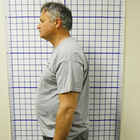
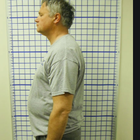
Full-side view
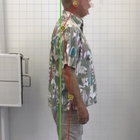
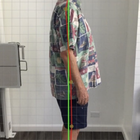
Full-side view
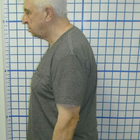
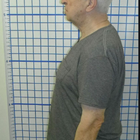
Full-side view


Full-side view
WHY US?
At Medijump, we're making medical easy. You can search, compare, discuss, and book your medical all in one place. We open the door to the best medical providers worldwide, saving you time and energy along the way, and it's all for FREE, no hidden fees, and no price markups guaranteed. So what are you waiting for?

Free

Best Price

Widest Selection

Risk-Free
What you need to know about Chiropractic Adjustment in Delhi

A chiropractic adjustment, also known as spinal manipulation, is a procedure that is performed to improve spinal motion and enhance the body’s physical function by bringing the bones of a joint back to their normal, natural position. The procedure is performed by trained specialists (chiropractors) who use their hands or a small instrument to apply a controlled, sudden directional thrust into a spinal joint. Besides chiropractors, physical therapists and osteopathic physicians may be trained and licensed to perform chiropractic adjustment as well.
Some of the most common conditions for chiropractic adjustment are low back pain, neck pain, and headache.
What is the cost of Chiropractic Adjustment in Delhi?
Several variables, including the intricacy of the patient's illness, the chiropractor's experience, and the location of the clinic, can have a considerable impact on the price of the Chiropractic Adjustment in Delhi. Budgeting for this treatment must take these things into account. Despite the cost, keep in mind that this is a safe, all-natural therapy option that could spare you from needing to undergo costly procedures or take prescription medication for an extended period of time.
What does a Chiropractic Adjustment Procedure Involve?
During a chiropractic adjustment, you will lie down on a specifically designed chiropractic table so the chiropractor can administer treatment. Your position on the table can vary depending on your problem or diagnosis. Most often, the chiropractor will ask you to lie face down. The chiropractor will use their hands to apply a controlled, directional force to a joint. This movement is designed to push the joint beyond its usual range of motion. You may hear cracking or popping sounds as your joints are moved by the chiropractor during a treatment session.
How Long Should I Stay in Delhi for a Chiropractic Adjustment Procedure?
A typical Chiropractic Adjustment session takes around 30 minutes to an hour, depending on the complexity of the condition being treated. Since the procedure is non-invasive and has a minimal recovery period, you can leave the clinic immediately after the session. A chiropractic adjustment may require a series of visits, usually around 6 to 10 visits until you attain maximum improvement. You can travel to Delhi multiple times for each visit, or you can stay in the area until you complete all treatment sessions.
What's the Recovery Time for Chiropractic Adjustment Procedures in Delhi?
The recovery time varies for one person to another. In general, it is recommended that you rest for at least a day or two after each session of chiropractic adjustment, especially if you experience minor side effects, such as fatigue, headache, or pain in the parts of the body that were treated. You may also need to avoid strenuous activity until your condition is fully healed. Your chiropractor will give you a detailed recovery timeline.
What sort of Aftercare is Required for Chiropractic Adjustment Procedures in Delhi?
While receiving a Chiropractic Adjustment doesn't necessitate a specific aftercare routine, following certain guidelines can amplify its benefits and support overall. Your chiropractor will give you specific aftercare instructions which may include:
-
Drink plenty of water. Keep drinking more than the normal amount for several days to keep your body properly functioning and healthy.
-
Keep moving. Avoid sitting for long periods of time and try going for a long walk or take a bike ride. If you need to go back to work, it is best that you utilize a standing desk.
-
Move carefully. While you need to stay active, you should not overdo it.
-
Do the exercises that your chiropractor gives you.
What's the Success Rate of Chiropractic Adjustment Procedures in Delhi?
According to the National Center for Complementary and Integrative Health (NCCIH), chiropractic adjustment has been proven to provide relief for mild and moderate low back pain. The success rate of Chiropractic Adjustment is quite high, with studies showing approximately 80% of patients experience relief from their symptoms. Many patients in Delhi have reported significant improvements in their health, mobility, and quality of life after receiving chiropractic adjustments. Keep in mind, however, that success rates can vary depending on the individual's health conditions and how they respond to the treatment.
Are there Alternatives to Chiropractic Adjustment Procedures in Delhi?
Massage therapy, exercise, and physical therapy offer similar results to chiropractic adjustment. Other alternatives to chiropractic adjustment include painkillers, spinal fusion surgery, or nerve treatment.
It's important to remember that what works best vary from person to person, and sometimes a combination of treatments is most effective. Make sure to consult your doctor for the best treatment for your specific case. Your health should always be the top priority, and there's no one-size-fits-all solution to any condition.
What Should You Expect Before and After the Procedure
Before the Chiropractic Adjustment, your chiropractor will perform a comprehensive assessment to understand your health condition better. This includes a physical examination, medical history review, and possibly, imaging tests. Understanding your Health Conditions and issues in depth helps the chiropractor to customize a treatment plan that suits your needs.
After the procedure, it's common to feel some immediate relief. However, some patients might experience minor side effects, such as discomfort in the treated area, headaches, or fatigue. These symptoms usually go away within a few hours or days. Your condition will likely improve, the pain should disappear, and you will feel reenergized. Generally, a successful chiropractic adjustment will improve your quality of life
What are the Potential Risks of Chiropractic Adjustment?
Overall, the procedure is considered safe. Minor and temporary side effects (headache, sore joints, dizziness, fatigue) occur in 23% to 83% adult patients. Serious risks that can be debilitating are very rare, ranging from 1 per 2 million adjustments and 13 per 10,000 patients. These serious risks include:
-
Spinal cord injury
-
Spinal disk injury
-
Stroke
-
Cauda equina syndrome.
Can children and teens receive Chiropractic Adjustment?
Indeed, youngsters and adolescents can securely undergo Chiropractic Adjustment. Chiropractic care is experiencing heightened popularity as a precautionary healthcare approach amongst budding populations, serving as a boon to their developing bodies while fostering salubrious habits. This treatment can assist with posture-related concerns, sporting traumas, back and neck discomfort, and events extend to conditions like asthma and ear infections.
Is Chiropractic Adjustment safe for pregnant women?
Yes, it is widely recognized that expecting women can safely undergo chiropractic adjustments. Numerous pregnant women seek chiropractic care to address common discomforts like sciatica and backaches. It can expedite labor and childbirth duration, manage nausea symptoms, sustain a healthier pregnancy, and potentially prevent a caesarean delivery. Nonetheless, it's indispensable to always consult with your doctor prior to undergoing any medical treatments during pregnancy.
The techniques used by chiropractors while administering adjustments on pregnant patients are designed to avoid abdominal pressure. They also provide secure and beneficial prenatal exercises and stretches. To ensure the safest and most effective treatment, it's crucial to furnish your chiropractor with a precise and thorough medical history, inclusive of details pertaining to your pregnancy.
Whilst the information presented here has been accurately sourced and verified by a medical professional for its accuracy, it is still advised to consult with your doctor before pursuing a medical treatment at one of the listed medical providers
No Time?
Tell us what you're looking for and we'll reachout to the top clinics all at once
Enquire Now

Popular Procedures in Delhi
Prices Start From $400

Prices Start From $21

Recommended Medical Centers in Delhi for Chiropractic Adjustment

- Interpreter services
- Translation service
- Religious facilities
- Medical records transfer
- Medical travel insurance
- Health insurance coordination
- TV in the room
- Safe in the room
- Phone in the room
- Private rooms for patients available

- Interpreter services
- Translation service
- Religious facilities
- Medical records transfer
- Medical travel insurance
- Health insurance coordination
- TV in the room
- Safe in the room
- Phone in the room
- Private rooms for patients available

- Interpreter services
- Translation service
- Religious facilities
- Medical records transfer
- Medical travel insurance
- Health insurance coordination
- TV in the room
- Safe in the room
- Phone in the room
- Private rooms for patients available

- Interpreter services
- Translation service
- Religious facilities
- Medical records transfer
- Medical travel insurance
- Health insurance coordination
- TV in the room
- Safe in the room
- Phone in the room
- Private rooms for patients available

- Interpreter services
- Translation service
- Religious facilities
- Medical records transfer
- Medical travel insurance
- Health insurance coordination
- TV in the room
- Safe in the room
- Phone in the room
- Private rooms for patients available

- Interpreter services
- Translation service
- Religious facilities
- Medical records transfer
- Medical travel insurance
- Health insurance coordination
- TV in the room
- Safe in the room
- Phone in the room
- Private rooms for patients available
Chiropractic Adjustment in and around Delhi
Introduction
Delhi is officially known as the National Capital Territory of Delhi (NCT). It is home to the capital of India, New Delhi. With a population of over 18 million, it is the second most populous city in the country. The city is brimming with vibrant modern life but also still steeped in history. People come to the city for its cultural richness and gastronomic scene.
Recently, Delhi has emerged as a medical tourists’ favorite destination. It’s the perfect place for those who seek low cost high-quality, world-class healthcare. India continues to expand its medical tourism sector with Delhi as one of the top hubs for medical facilities. Among the leading hospitals in Delhi are Max Super Specialty Hospital, Apollo Hospital Indraprastha, and BLK Super Specialty Hospital. Breast Augmentation and heart surgery procedures are two of the most popular procedures in the city. Patients come to Delhi for the following reason:
- State of the art medical facilities with international and local accreditation
- Skilled doctors, many of which trained in the UK
- English speaking doctors and staff
- Wide range, cost-effective procedures
- Traditional healthcare therapies and practices such as Ayurveda and yoga
Popular Areas in Delhi
Delhi is overflowing with enchanting history and colorful modern life. The city is made of layers of history, temples, monuments, markets, and UNESCO World Heritage Sites. Many tourists come to witness its charm and discover its hidden treasures. Go to Old Delhi and visit the Red Fort where a load of people fell in love with its beautiful structure influenced by Islamic, Persian, Hindu, and Timurid traditions. Learn Islamic history in one of the largest mosque in India, Jama Masjid. Shop in Chandni Chowk Market, the largest shopping hub in Delhi. Pay your respect in Raj Ghat, a memorial dedicated to Mahatma Gandhi.
There is also New Delhi, India’s capital, where you can stroll around India Gate, a war memorial that was inspired by the Arc de Triomphe. Humayun’s Tomb, the tomb of the Mughal Emperor Humayun, is also worth a visit for anyone who loves history. Don’t forget to go to the Gandhi Museum (Gandhi Smirti) to learn more about the leader of Indian independence’s life. Tourists can also visit an enthralling historical site known as Purana Qila. In your spare time, you can shop in Janpath Market and Sarojini Market.
South Delhi has many sites to enjoy such as the unique Lotus Temple, the soaring tower of victory Qutab Minar, and the thriving nightlife of Hauz Khas Village. This district also has a famous shopping paradise including Dilli Haat, Shahpur Jat, GK 1 N-block market, and Dastkar Nature Bazaar.
Weather and Climate in Delhi
Delhi has a high variation of temperature between summer and winter. Summer in Delhi can get really hot with an average temperature of around 32°C. The season starts in April to June and the temperature can reach as high as 46°C. It is advisable to avoid this season if you’re planning to do a lot of outdoor activities. The monsoon starts in late June to mid-September. The temperature usually falls to an average of 29°C, but it’s rainy and humid.
The temperature plummets during winter, ranging between 6°C to 7°C. This season starts in November and lasts until March. October to March is the best time to visit Delhi because the weather is neither too hot or too cold.
Getting Around in Delhi
Indira Gandhi International Airport, located 16 km from New Delhi city center, is the busiest airport in India. This airport serves domestic and international flights that connect the city with almost every country across the globe. Terminal 1 is used by budget airlines such as IndiGo and SpiceJet, while Terminal 3 is mainly used for international operations and several domestic flights.
The city center can be reached by bus, airport taxi, and metro. The bus is the most affordable option although it can be very crowded. Taxi is a good way to travel but always use licensed taxis such as WTi Cabs, Meru, and Mega Cabs. App-based taxis like Ola and Uber is another choice of travel. The fastest way to travel to Delhi’s city center is by The Delhi Metro. The travel time is less than 25 minutes and should cost around 10 INR to 60 INR.
There are several transportation modes to get around Delhi. The Delhi Metro is the best option to travel around because it offers comfort and fast travel. Taxis are widely available in the city. The easiest way to call a taxi is by the Ola app. It’s usually cheaper to use Ola than a local taxi stands.
For shortstops, opt for auto rickshaws. They’re affordable and easy to find. Make sure to negotiate the fare before getting in because most drivers will refuse using the meter. The drivers are also known to overcharge foreign visitors. Driving around Delhi is not recommended since the traffic can be time-consuming and there is a lot of bad driving. You can always hire a local driver if you want to get around by car.
Tourist Visas in Delhi
Citizens of Nepal and Bhutan can enter India without a visa. Citizens of Japan and South Korea can apply for a visa on arrival. Citizens of 150 countries can apply for e-Visa which is valid for 60 days. There are medical and medical attendant e-visas for tourists who come for healthcare. Other nationalities are required to apply and obtain a visa before entering the country.
All visitors must hold a passport valid for at least 180 days after their entry to India and should have at least two blank pages.
Additional Information
- Local Currency: the official currency is the Indian rupee (INR). 1 USD converts to 70 INR.
- Money & Payments: Major currencies such as US dollars, euros, and pounds sterling are easy to change throughout the city. The easiest way to exchange money is by using ATMs. Some shops, restaurants, and hotels will accept credit cards. It is advisable to always carry cash since a lot of places still accept cash only. Restaurants sometimes add a 10% service fee to the bills.
- Local Language: Hindi is the official language of Delhi. Urdu and Punjabi are widely spoken. Most people will be familiar with English. Many young people shop keepers, and tour guides can speak English very well.
- Local Culture and Religion: The major religion is Hinduism, followed by Islam, Christianity, Sikhism, Jainism, Buddhism, and Judaism.
- Public Holidays: The city celebrates major religions (Hindus, Muslims, and Christians) holidays. The city hosts many festivals all year round such as The Grub Fest, The Palate Fest, and Holi Festival.
Popular Searches
- Plastic Surgery in Thailand
- Dental Implants in Thailand
- Hair Transplant in Thailand
- Breast Augmentation Thailand
- Gastric Sleeve in Thailand
- Gender Reassignment Surgery in Thailand
- Laser Hair Removal in Bangkok
- Botox in Bangkok
- Dermatology in Bangkok
- Breast Augmentation in Bangkok
- Coolsculpting in Bangkok
- Veneers in Turkey
- Hair Transplant in Turkey
- Rhinoplasty in Turkey
- Stem Cell Therapy in Mexico
- Rhinoplasty in Mexico
- Liposuction in Mexico
- Coolsculpting in Tijuana
- Rhinoplasty in Korea
- Scar Removal in Korea
- Gastric Sleeve in Turkey
- Bone Marrow Transplant in India
- Invisalign in Malaysia
- Plastic Surgery in the Dominican Republic
- Tummy Tuck in the Dominican Republic
- Plastic and Cosmetic Surgery in Poland
- Rhinoplasty in Poland
- Hair Implant in Poland
- Dental Implants in Poland
- IVF in Turkey
